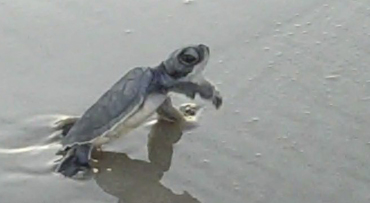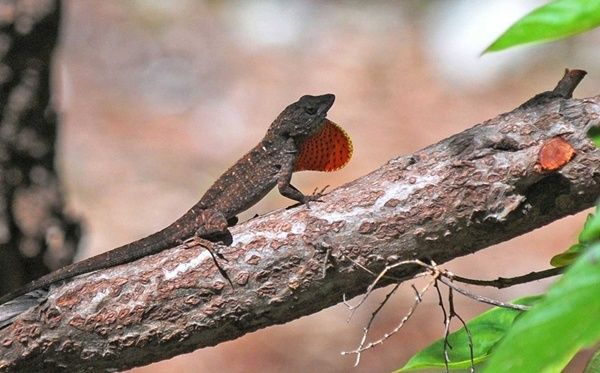|
For more than 25 years, the Friends of Canaveral have supported the National Park Service in its mission to preserve, protect and interpret the 57,000 acres of pristine shoreline, dunes and wilderness that are Canaveral National Seashore.
|
|
AUGUST 2017 ~ In this issue
|

Laura Henning
|
 Canaveral Seashore Plein Air Paint Out Canaveral Seashore Plein Air Paint Out
Friends of Canaveral and Canaveral National Seashore would like to thank the Patrons, Sponsors, Art Lover, Merchants, Artists, Volunteers and all the Friends that sponsored this great community event over the past 7 years. With your help, we raised over $40,000 that supports the many public and youth educational programs that Canaveral offers.
We are pleased to announce in 2017, this event will become the New Smyrna Beach Paint Out, hosted by New Smyrna Marina and the Outriggers Tiki Bar & Grille. All proceeds for the NSB Paint Out, held October 8 - 14
th, will benefit the
Marine Discovery Center.
We hope you will continue to support this well attended and popular community event. For more information please contact: Mary Sue Weinaug -
[email protected]
|

KEEP AMERICA BEAUTIFUL
The following is a letter to the editor written by one of our Friends of Canaveral Board members. We wanted to share this important message with all of our friends:
Beach on July 5 enough to bring tears
Those who
are old enough will remember the 1970s public-service announcement for Keep America Beautiful that featured a crying Native American, bearing personal witness to pollution of our air, water, and beaches. I cried one day last week at 6:30 a.m., at what I saw as a volunteer to clean up a Volusia County beach from the July 4 celebrations. Upon hitting the beach at first light and lowering tide, I was buoyed by the fact that many celebrants took the county's aerial message to heart: "Toes in the sand - Trash in the can." Truly, the trash and recycle containers were full to overflowing.
But, due to ignorance or apathy, some visitors or residents chose to leave our beloved beach, a dangerous mess. I found the usual suspects: Foam plates, plastic bottles, caps, forks and cups, glass bottles and aluminum cans. But that day, adding to the mess was pounds of exploded fireworks' trash.
Armed with contractor bag and gloves, I collected - in addition to the aforementioned - clothing, shoes, and toys either forgotten or swept away with the returning tides. Not only is the safety of folks enjoying early morning beach walks and small children playing in sand thrown to the wind without a thought, all this human debris is unsafe for the marine life too! I saw large open holes dug purposefully in the sand as launching pads for fireworks, still deeply open this morning - this was a serious safety threat to sea turtles during egg-laying season.
The offense that brought me personally to tears was the large amount of firework detritus surrounding a clearly marked turtle nest. I'm talking mortar shells, the works! The nest marker indicates it was laid in May, and due to hatch in a couple weeks. What did all that seismic blasting do the eggs so close to hatching? I found dead, exploded fish, evidence of someone thinking it would be "fun" to throw fireworks into the sea. Ignorance can be cured with education and awareness. Apathy? I can only hope. Today, 40 years later, the Native American and I are still crying.
Terry Bledsoe
New Smyrna Beach
|

CANAVERAL NATIONAL SEASHORE'S
2017 INTERN
The Friends of Canaveral would like to thank everyone for their generous donations and ongoing membership, which enables us to fund important programs such as our 2017 Intern, Celia DeVoss. This is a letter from Ms. DeVoss that we wish to share:
Hello, Friends of Canaveral National Seashore:
First, to start off I would like to thank you for sponsoring me. I absolutely love this job! I feel like I am really making a difference in the work I am doing here. Some of the projects I have been working on include conducting sea turtle nesting surveys. To do this I go to the beach early in the morning and ride on an ATV. I then scan the beach looking for sea turtle nests. When I spot a nest, I write down some important information on what kind of nest it is. Next, I then screen the nest and mark it with a stake. I continue this process down the beach. Other projects I have worked on are Wilson's plover surveys. To do this I take data on the nest/chick count of Wilson's Plover on the beach.
 |
|
 |
Celia DeVoss, Intern
|
I am also conducting egg collection of mosquitos; I colle
ct this data and send it off to be tested to ensure there is no disease carrying mosquitos within park boundaries. I have also assisted the NPS Inventory and Monitoring vegetation monitoring group. When working with them I take information on what types of plants are around the area and how much canopy cover there is too. Other than working in the field, I also do office work. All the data that has been collected comes to me and I then put it into the computer files. This job has been wonderful, and such a great opportunity for me to get to know the environment around me.
Sincerely,
Celia DeVoss
2017 Canaveral National Seashore Intern
|

SEA TURTLE NUMBERS JULY ? 2017
|
Apollo |
Playalinda |
|
Loggerhead
|
1588 |
2282 |
|
Green Turtle
|
875 |
2193 |
|
Leatherback
|
7 |
16 |
|
Kemps Ridley
|
0 |
0 |
TOTAL: 6,938
As of 7/31/2016 total was: 5038
|

SEA TURTLE NESTING SEASON
Did You Know These Baby Sea Turtle Facts?

- It's estimated that only 1 in 1,000 hatchlings will survive to adulthood.
- Sea turtle hatchlings eat a variety of prey including things like molluscs and crustaceans, hydrozoans, sargassum sea weed, jellyfish, and fish eggs. Unfortunately, hatchlings also mistake garbage and objects like tar balls as food and ingest them.
- Leatherback and flatback hatchlings are significantly larger than other sea turtle species.
- Leatherbacks are pelagic (open water) even as hatchlings and their larger size helps maintain their temperature.
- Hatchlings use the natural light horizon, which is usually over the ocean, along with the white crests of the waves to reach the water when they emerge from the nest. Any other light sources such as beachfront lighting, street lights, light from cars, campfires etc. can lead hatchlings in the wrong direction, also known as disorientation.
- Once out of the nest, hatchlings face many predators including ghost crabs, birds, raccoons, dogs, and fish.
- Many scientists are concerned that rising global temperatures will result in warmer sand, causing more female than male baby turtles. Learn more information about the effects of global warming on sea turtles. Read more: 5 THINGS YOU CAN DO TO SAVE SEA TURTLES
|
|
|
Watch this video on sea turtle nesting.
|
|
Canaveral National Seashore
|

Wait For It...
Watch For It!
1st Annual Canaveral Seashore Turtle Derby
Coming to a Lagoon near you, details in the September newsletter
|
|
DID YOU KNOW?
About Those Florida Yard Lizards: Anoles
[uh-noh-lee]

Have you ever wondered about those entertaining little acrobats that leap, lunge and enliven the green spaces around our Florida homes? Why are some green, brown, gray or black? Why they're bobbing and bouncing and flashing that colorful throat ornament?
- Fossils indicate Anoles have been around about 6 million years.
- Anoles are insectivores and eat bugs , primarily crickets, spiders, flies, small roaches and when they can catch them, moths. They don't much like mosquitos or lovebugs.
- Head Bob - One of the many displays used to communicate
-
 Dewlap - Throat fan is used to intimidate or impress. Anoles use their dewlaps to attract mates and intimidate rivals; the latter usually involves a lot of head bobbing, too. Mating season runs from March to October. Dewlap - Throat fan is used to intimidate or impress. Anoles use their dewlaps to attract mates and intimidate rivals; the latter usually involves a lot of head bobbing, too. Mating season runs from March to October.
- Fearsome - Anoles have many teeth to puncture and mash prey.
-
 Tail Spin. Thanks to a tail that can break off and grow back again and again, a fortunate anole may have more lives than a cat (and may need every one of them if there's a clawed, furry fiend in the neighborhood!). The enemy prowls, then attacks and snags the tail, waiting to antagonize or devour the lizard. Suddenly, the perpetrator is left with only a wiggling tail, while the anole scampers to freedom. Tail Spin. Thanks to a tail that can break off and grow back again and again, a fortunate anole may have more lives than a cat (and may need every one of them if there's a clawed, furry fiend in the neighborhood!). The enemy prowls, then attacks and snags the tail, waiting to antagonize or devour the lizard. Suddenly, the perpetrator is left with only a wiggling tail, while the anole scampers to freedom.
- Anoles have a third eye in the top of their heads. While it doesn't "see" the way the other two do, it helps keep the reptiles' biological and seasonal clock in tune.
- Anoles climb vertical surfaces thanks to claws and tiny hair-like projections that bond with any surface. Anoles are territorial and will run off rivals, especially during mating season.
- Anoles can live up to seven years in captivity; most wild anoles live about two years.
|
|
| |
|
 Support the Friends of Canaveral through your purchases at Amazon.
To shop at AmazonSmile simply go to
smile.amazon.com from the web browser on your computer or mobile device.
|
|
|
Be sure to "Like" us on our Facebook Page!
|
|
|
| |
| |
Email Prepared by Elaine Morin, Dale Smith
New Smyrna Beach, FL ~ 386.424.6931
|
|
|